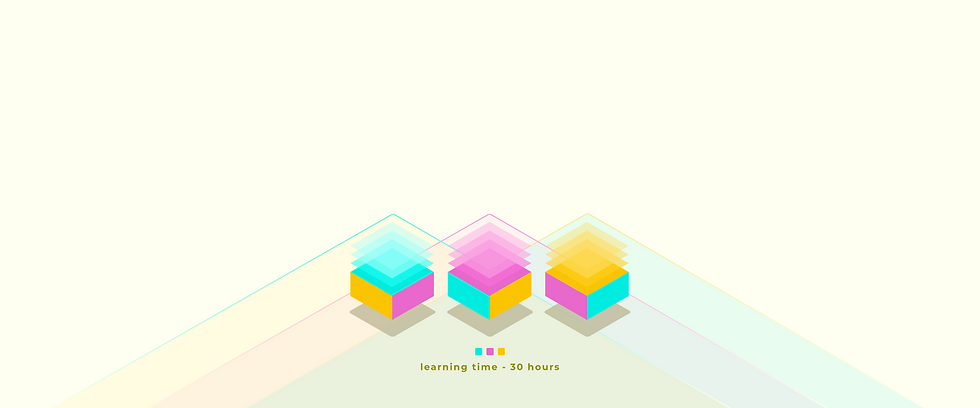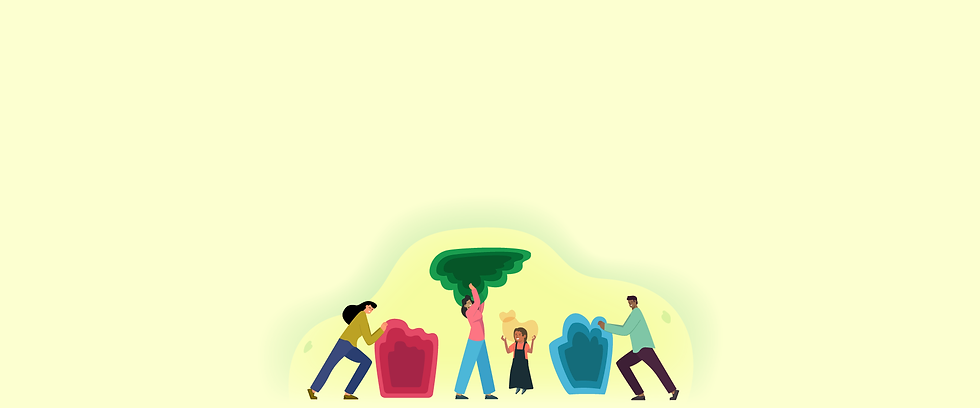
MODULE#6
Jump to any section using the links below. We encourage you to create your own learning curve. Allocate time and space effectively, as per your capacity to learn and grow. Have fun!
Access previous modules here.

ECOLOGY
2023 marks the 50th anniversary of The Limits To Growth. The research and book was undertaken in 1973 by Donella Meadows, Denis Meadows, Jorgen Randers and William Behrens. Backed by computer models and systems analysis, the authors warned that "the underlying dynamics of the modern industrial world are unsustainable on the timescale of a couple of human lifetimes." We are at the peak of that "timescale". We must concur and perhaps adapt within 'The Limits To Growth'?
Donella (Dana) Meadows has inspired thousands of individuals with her pioneering work in systems thinking. Her voice, in support of a just and sustainable world and her unbeatable optimism can inspire us. Why? Because our civilization is clearly in overshoot and unsustainable. The section below presents key ideas, predictions, models and practices for anyone striving for change. Systems Change.

We live in a world of remarkable, adaptable and complex systems. They exist inside us and all around us. From tiny single cell systems to huge and complex 'biophysical schemas' of the earth. The biosphere, oceans, forests, rivers, living species etc etc are remarkable examples of complex sustainable systems. Humans have built super complex systems to make sure civilization functions and grows as planned. But is it? And if so, for how long?
For long, mainstream economics, planning and culture has ignored the nature of earth systems. The leaders ignored the hard science! Can we really move nations and people to be sustainable? Not so easily. Not without a major reduction in our current lifestyles, emissions, energy and desires. Not without systems change. People transition with new systems of scale and limits. Towards sustainable lifestyles, based on science and empathy. Prepared for the incoming future that you and your kin will belong to.



MUSIC

Musicians often navigate within systems. The flow chart below contains 3 systems. The 1st (orange) is prevalent in popular forms of music across the world. It is bound by inherent limits, of repetition and copy production; prone to exhaustion over time. The 2nd system (green) involves challenging the norms and the audience with forms of music previously unheard. It is also bound by limits, dependent on innovation and resources. The 3rd (blue) is temporal. Most often an outcome of systems 1 and 2. As an artist how do you navigate and find success? Revise your system?
As shown earlier, the emerging position of a musician is about innovation and creating experiences. Call it an act, or business, career or art, we should diversify. Broaden our skills, thinking process and social circles. The coming future is about a fusion of activities directed by the artist; production, technological, performance, networking and business. Below we present four remarkable examples, of artists and organizations that are creating new experiences and pathways, while exiting the old maxims of centralized markets and fixed roles.

Cinematic scores, breakout devs, molecular music and more!

AUTONOMY

In this module, we are exploring Autonomy as a story, of our evolution over thousands of years. From ancient to modern societies, humans live within systems, with inherent advantages as well as disadvantages. The objective is to evaluate and imagine societies of the near future. Robust and small. Ones which offer greater autonomy, equity and individual freedom.
Left - Once upon a time, ancient nomadic hunter gatherers thrived allover the world. 50,000 BCE onward early humans developed important skills needed for survival and sustenance. They were also very good at evading centralized power, fixed ownership, taxes and forced labor. Their kinship, laws and knowledge defined their limits. Their numbers have vastly perished. However we stand to learn a lot from them. For example, a small community is able to innovate and transition faster than a big society. Learn how?
Middle - The widespread domestication of ecosystems and animals followed by scaled agriculture lead to small and big civilizations. As a result human beings multiplied rapidly, creating complex systems of governance around a centralized power structure (king, queen, priest, cardinal etc). Big societies with centralized power lead to lesser autonomy for common people. Also it meant that people must compete with each other, in order to gain more autonomy, property and wealth. How is that true?
Right - Urbanization and industrialization lead the way to nuclear families. Super structured societies allover the world. Here too we find centralized power (of the state) acting as a 'benevolent force' in favor of common people and their welfare. Yet the autonomy of individuals depends upon how the state views the entire nation and it's citizens. Institutions like democracy, law and justice are favorable to protect common peoples' rights and autonomy, however prone to corruption and failure.
And for how long can such a society exist?

A planned society or social order is always schematic. But does it have to stay fixed (definitive)? Why not be dynamic and organic, as any real, functioning social group is in reality. Look at the world around you. Things are always changing. Hence, practical knowledge and experience should be at par with formal deductive knowledge. Can we allow new ideas of governance and planning to replace older schematic systems? As seen before, centralized worlds are grounds of both our freedoms and our 'unfreedoms'. Decentralized systems provide greater autonomy and control for people.
Envision societies in which people matter, instead of nations and markets. Where common people define values, desires, wants and objections. Autonomy, freedom and social happiness increases, when disparity (gap) between the dominant and subordinate reduces. Think small, think robust. Invest in relationships, generosity and exchange = more autonomy!
How does the society you belong to, look in the near future?

Society is a "very mysterious animal with many faces" said Vaclav Smil in 1990. True, as every society and it's individual members contain many hidden potentialities, talents and capacity - to think and act independently. We think that it's extremely shortsighted, to believe that society as we know today, will last forever. That the current model or system that we are part of, is it's only true face. Past societies were very different from the globalized one we live in today. None of us knows all the potentialities that 'nest in the spirit' of the individual and the population.
Everyone has the right and capacity to participate, in new 'Worldmaking'.
One way or another, we all are aspiring for greater autonomy. Let us view society as an outcome of relationships. Between the natural, political, cultural, fictional, literary and virtual worlds. Within each world, we learn to redefine, rebuild and share new systems. Governance which positively impacts society, multiplies autonomy.

The objective as an open source organization, is our increased ability to serve the community. Planting new 'Seeds' (systems, knowledge and ideas) that positively impact our lives and the world we belong to. An integration of sustainable enriching practices via Ecology, Music and Autonomy.
We thank you, for being part of this journey and transition.

End of Module#6 by SEED. Open-source Systems.
Designed and compiled by Applied Sound & Ecology. 2023
© SEED by Applied Sound And Ecology.
New Delhi, India.
This website is low-tech : low energy using optimized code and images. Website design and branding by BIRDHOUSE (Valencia)
SEED Data Protection and Privacy Policy











